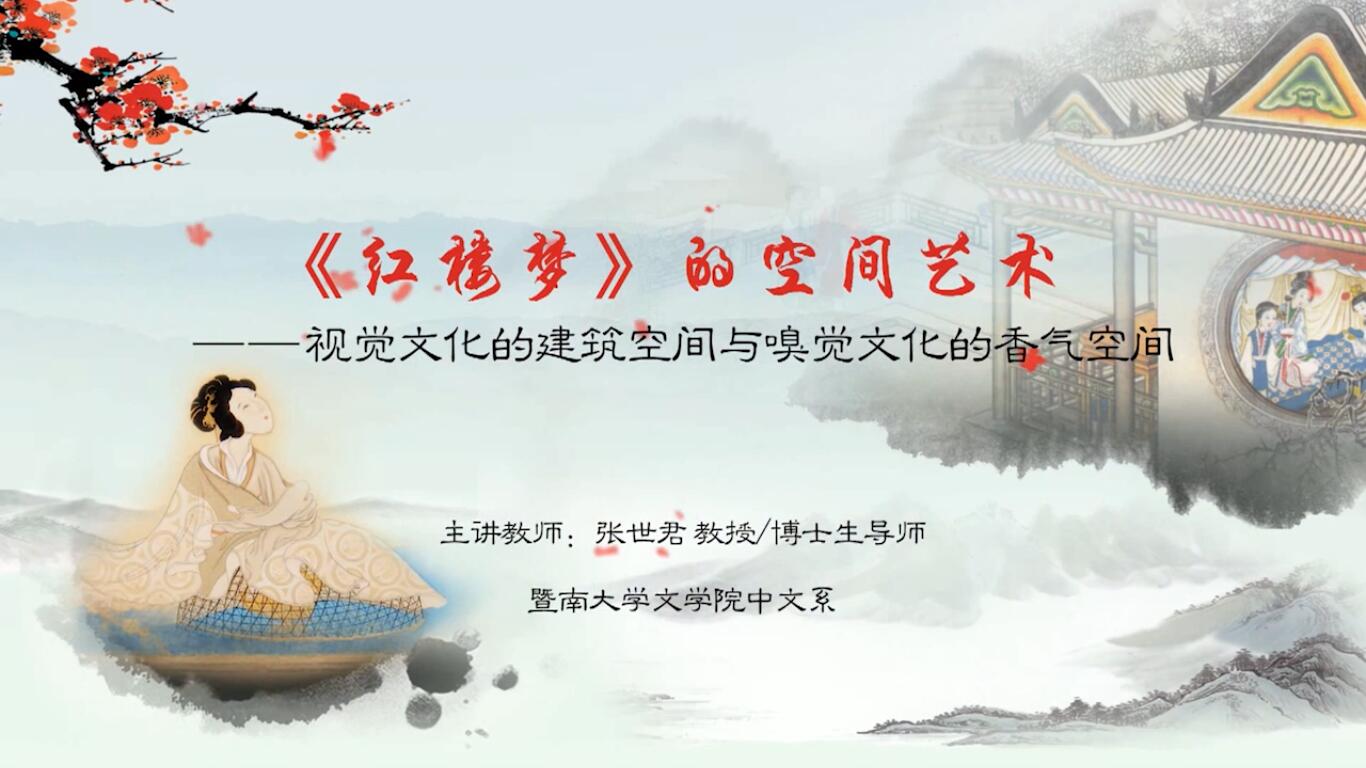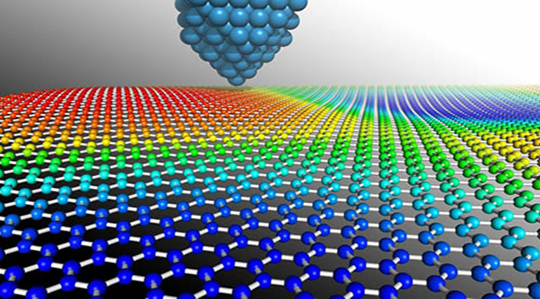
当前课程知识点:Fundamentals of Inorganic Materials Science > 8 Phase transformation > 8.1 The categories of phase transformation > 8.1 The categories of phase transformation
返回《Fundamentals of Inorganic Materials Science》慕课在线视频课程列表
返回《Fundamentals of Inorganic Materials Science》慕课在线视频列表
同学们好,
从今天开始我们来学习相变的相关知识。
在之前的内容中,
大家已经对相变有了一定的了解。
本章我们将从
热力学和动力学的角度系统地学习相变。
相变是指
在一定条件下物质的结构发生转变的过程。
那么相变是如何发生的呢,
相变有哪些特点呢。
本节我们先从分类来认识相变。
依据不同的标准,
相变可以分为不同的类型。
如果从热力学的角度分类,
相变可分为一级相变和二级相变。
发生一级相变表明相变前后,
体系的化学势相等,
但化学势的一阶偏微商不相等。
根据物理化学的知识可知,
化学势对压强和温度的一阶偏微商
分别是体积和熵。
因此,
一级相变
伴随有体积变化和相变潜热,
这是一级相变最大的特点。
哪些相变属于一级相变呢?
晶体的熔化、升华,液体的气化等都是一级相变。
与一级相变相对应的是二级相变。
发生二级相变时,
两相的化学势相等,
一阶偏微商也相等,
但化学势的二阶偏微商不等。
化学势对于温度和压强的
二阶偏微商有三个,
也具有特定的物理含义,分别为膨胀系数,压缩系数、比热容。
因此,
二级相变最大的特征是,
相变时无体积变化,
无相变潜热,
但膨胀系数、压缩系数和比热容
会发生突变。
如果
以温度为纵坐标,
膨胀系数、压缩系数
或比热容为横坐标,
那么,发生二级相变时,
这三个物理量随温度的变化曲线
在相变温度时出现突跳。
曲线形状类似于希腊字母辣么大。
因此,
二级相变又称为辣么大相变,
相变点称为居里点或辣么大点。
哪些相变属于二级相变呢?
一般合金有序-无序转变、
铁磁性-顺磁性转变、超导态转变等都是二级相变。
需要指出的是,
一些实际相变可能
同时具有一级相变和二级相变的特征。
比如,
压电陶瓷BaTiO3晶体有居里点,
理论上是二级相变,
但是也有较小的相变潜热,
又具有一级相变的特征。
这类相变实际上是混合型相变。
如果按照相变时质点迁移特征来分,
相变分为扩散型相变
和无扩散型相变。
扩散型相变的特点是
相变依靠质点的扩散来进行的。
这类相变很多。
顾名思义,
无扩散型相变的发生不需要质点扩散。
马氏体相变是最常见的无扩散型相变。
马氏体相变
最早在中高碳钢淬火后被发现的。
如果将钢加热到一定温度后经迅速冷却,
则会使钢的硬度和强度变大。
这种淬火后形成的物相称为马氏体。
最早把钢中的奥氏体转变为马氏体的相变
称为马氏体相变。
后来发现其他金属、无机非金属材料中
也存在马氏体相变。
氧化锆中四方结构和单斜结构间的转变
就是一种马氏体相变。
当发生马氏体相变时,
晶体会在外加应力的作用下,
通过晶体的一个分立体积的剪切作用,
以极迅速的速率完成相变。
因此,马氏体相变存在这样几个特点:
一、相变前后存在习性平面
和晶面定向关系;
二、相变时无扩散;
三、相变很快,
速率可达声速;
四、无特定相变温度,
而是在一个温度范围内发生。
除以上两种分类方式外,
还可以依据相变方式、
成核特点来分类。
这些相变的特点,
我们会在接下来的几节中详细学习,
这里就不再详细介绍了。
好,相变的分类就讲到这里,
谢谢!
-Test for chapter 1
-2.1 Type of defect
-2.2.1 The expression methods of point defects
--2.2.1 The expression methods of point defects
--2.2.1 The expression methods of point defects
-2.2.2 The rules for writing of defect reaction equation
--2.2.2 The rules for writing of defect reaction equation
--2.2.2 The rules for writing of defect reaction equation
-2.3 Calculation of thermal defect concentration
--2.3 Calculation of thermal defect concentration
--2.3 Calculation of thermal defect concentration
-2.4 Non-stoichiometric compounds
--2.4 Non-stoichiometric compounds
--2.4 Non-stoichiometric compounds
-Homework for chapter 2
-Test for chapter 2
-3.1 The classification of solid solutions
--3.1 The classification of solid solutions
--3.1 The classification of solid solutions
-3.2 Substitutional solid solution
--3.2 Substitutional solid solution
--3.2 Substitutional solid solution
-3.3 Interstitial solid solution
--3.3 Interstitial solid solution
--3.3 Interstitial solid solution
-3.4 The research method of solid solutions
--3.4 The research method of solid solutions
--3.4 The research method of solid solutions
-3.5 Questions for crystal imperfection and solid solution
--Questions for crystal imperfection and solid solution
-Homework for chapter 3
-Test for chapter 3
-4.1 Melt structure
-4.2 The properties of the melt
--4.2.1 The properties of the melt_viscosity
--4.2.2 The properties of the melt_surface tension
--4.2 The properties of the melt
-4.3 The characteristics of glass
--4.3 The characteristics of glass
--4.3 The characteristics of glass
-4.4 The formation of glass
--4.4.1 The formation of glass_kinetics conditions
--4.4.2 The formation of glass_crystal chemical conditions
-4.5 The structure of glass
-4.6 The typical glass
-4.7 Questions for melt and glass
--Questions for melt and glass
-Test for chapter 4
-5.1 Phase equilibrium in silicate systems
--5.1 Phase equilibrium in silicate system
--5.1 Phase equilibrium in silicate system
-5.2 One-component system phase diagram
--5.2 One-component system phase diagram
--5.2 One-component system phase diagram
-5.3 Applications of one-component diagrams
--5.3 Applications of one-component diagrams
--5.3 Applications of one-component diagrams
-5.4 Binary diagrams
--5.4.1 Binary diagram with eutectic point
--5.4.2 Binary system with a congruent melting compound and one with an incongruent melting compound
--5.4.3 Other five types of phase diagrams of binary systems
-5.5 Applications of binary phase diagrams
--5.5 Applications of binary phase diagrams
--5.5 Applications of binary phase diagrams
-5.6 Ternary diagrams
--5.6.1 Representation of ternary system composition
--5.6.1 Representation of ternary system composition
--5.6.2 Three-dimensional state diagram and plane projection diagram of a simple ternary system
--5.6.2 Three-dimensional state diagram and plane projection diagram of a simple ternary system
--5.6.3 (1) Basic types of ternary phase diagrams
--5.6.3 (2) Basic types of ternary phase diagrams
--5.6.3 (3) Basic types of ternary phase diagrams
--5.6.3 Basic types of ternary phase diagrams
-5.7 Applications of ternary phase diagrams
--5.7 Applications of ternary phase diagrams
--5.7 Applications of ternary phase diagrams
-5.8 Research methods of phase equilibrium
--5.8 Research methods of phase equilibrium
--5.8 Research methods of phase equilibrium
-5.9 Questions for phase equilibria
--Questions for phase equilibria
-Homework for chaper 5
-Test for chapter 5
-6.1 Overview of diffusion
-6.2 The kinetic equations of diffusion
--6.2 The kinetic equations of diffusion
--6.2 The kinetic equations of diffusion
-6.3 The thermodynamic equation of diffusion
--6.3 The thermodynamic equation of diffusion
--6.3 The thermodynamic equation of diffusion
-6.4 Diffusion mechanisms and diffusion coefficient
--6.4 Diffusion mechanisms and diffusion coefficient
--6.4 Diffusion mechanisms and diffusion coefficient
-6.5 Diffusion in solid
-6.6 Factors affecting diffusion
--6.6 Factors affecting diffusion
--6.6 Factors affecting diffusion
-6.7 Questions for diffusion
-Homework for chaper 6
-Test for chapter 6
-7.1 Overview of solid state reactions
--7.1 Overview of solid state reactions
--7.1 Overview of solid state reactions
-7.2 Kinetic equation of solid state reaction
--7.2 Kinetic equation of solid state reaction
-7.3 Factors affecting the solid state reaction
--7.3 Factors affecting the solid state reaction
--7.3 Factors affecting the solid state reaction
-Homeword for chapter 7
-8.1 The categories of phase transformation
--8.1 The categories of phase transformation
--8.1 The categories of phase transformation
-8.2 Crystallization
--8.2.1 Crystallization thermodynamics
--8.2.2 Crystallization kinetics
-8.3 Phase Separation of glass
--8.3 Phase separation of glass
--8.3 Phase separation of glass
-8.4 Questions for phase transformation
--Questions for phase transformation
-Test for chapter 8
-9.1 Overview of sintering
-9.2 The driving forces and models of sintering
--9.2 The driving forces and models of sintering
--9.2 The driving forces and models of sintering
-9.3 Solid state sintering
--9.3.1 Evaporation-Condensation mass transfer
--9.3.2 Diffusion mass transfer
-9.4 Liquid phase sintering
--9.4.2 Solution-Precipitation mass transfer
-9.5 Grain growth and secondary recrystallization
--9.5.2 Secondary recrystallization
--9.5 Grain growth and secondary recrystallization
-9.6 Factors affecting sintering
--9.6 Factors affecting sintering
--9.6 Factors affecting sintering
-9.7 Questions for sintering
-Homework for chapter 9
-Test for chapter 9




